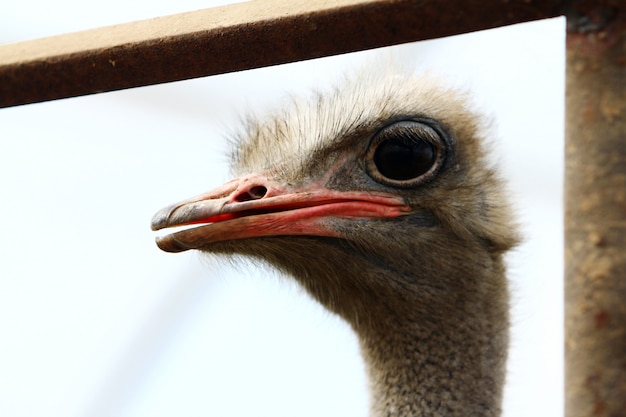

Ostriches are the largest birds in the world, and can grow up to 9 feet tall.
Despite their large size, ostriches can run at speeds of up to 43 miles per hour.
Ostriches have the largest eyes of any land animal, measuring about 2 inches in diameter.
Male ostriches have distinctive black feathers, while females have more grayish-brown plumage.
Ostrich eggs are the largest of any bird species, weighing about 3 pounds each.
Ostriches have only two toes on each foot, instead of the usual three or four.
Ostriches can live up to 40-45 years in the wild.
When threatened, ostriches can use their powerful legs to deliver a lethal kick to predators.
Ostriches have a unique mating ritual, where the male performs a dance to attract the female.
Ostriches don’t actually bury their heads in the sand, but they do lie down with their necks flat on the ground to hide from danger.
Ostriches have a keen sense of hearing, and can detect predators from far distances.
Ostriches are omnivores, feeding on plants, seeds, insects, and small vertebrates.
The ostrich’s long neck allows it to reach for leaves and fruits on trees, unlike most other large birds.
Ostriches have a remarkable ability to detect rainfall from miles away and can sense approaching storms.
Ostriches have a strict social hierarchy and live in flocks of up to 100 individuals.
Ostriches are native to Africa and are found in savannas, deserts, and semi-arid regions.
The ostrich’s wings are not capable of flight, but they do assist in balance and courtship displays.
Ostriches have a prehistoric lineage, dating back over 40 million years.
Ostriches have a unique respiratory system that allows them to survive in harsh and arid environments.
Ostriches are highly adaptable and can thrive in both extreme heat and cold temperatures.
Ostriches have a powerful digestive system, capable of breaking down tough plant matter.
Ostriches have good eyesight, and their eyes are equipped with two eyelids to protect against dust and debris.
Ostriches are the only birds that have a urinary bladder, which allows them to store water and survive in water-scarce regions.
Ostriches play an important role in their ecosystem by dispersing seeds through their feces.
Ostriches have a series of hollow quills in their feathers, contributing to their unique appearance.
Ostriches engage in communal nesting, where multiple females lay their eggs in the same nest.
The ostrich’s call is a low booming sound that can be heard from a distance.
Ostriches have adapted to be able to go long periods without drinking water, as they can obtain moisture from plants and insects.
Ostriches have a strong maternal instinct and the female will aggressively defend her eggs from predators.
Ostriches have been domesticated in some parts of the world for their meat, feathers, and eggs.
The ostrich’s brain is smaller in proportion to its body size compared to other birds.
Ostrich chicks are born with a tan or brown coloration, providing camouflage in their natural habitat.
Ostriches have been featured in mythologies and folklore throughout history, symbolizing strength and courage.
Ostriches have a unique ability to recognize their offspring even after long periods of separation.
Ostriches are known for being curious and intelligent birds, often investigating their surroundings.
The ostrich is the national bird of South Africa and is featured on their coat of arms.
Ostriches are capable of maintaining a constant body temperature by adjusting the blood flow to their extremities.
Ostrich feathers are highly prized for their beauty and are used in fashion and decorative accessories.
Ostrich eggs take about 42 days to hatch, one of the longest incubation periods among birds.
Ostriches have a unique defense mechanism called invisibility behavior, where they freeze and camouflage with their surroundings.
Ostriches have been recorded to swallow small rocks and pebbles, which aids in their digestion.
Ostriches have a strong immune system, which allows them to resist diseases and parasites.
Ostriches have a complex social structure, with dominance hierarchies and established territories.
Ostriches have long, powerful legs that can deliver a forceful kick, capable of injuring or even killing predators.
Ostriches have played a role in human culture for centuries, featuring in art, literature, and folklore worldwide.
Around the world, coffee enthusiasts enjoy Monin coffee concentrate since it is a multipurpose product. Conveniently combining…
The Importance of Choosing the Right Shower for Your Bathroom Renovating your bathroom can be…
Usain Bolt holds the record for the fastest 100-meter sprint in history.Bolt was named Sportsman…
Love is in the air... and it smells suspiciously like chocolate!Roses are red, violets are…
Life's a beach, take a picture and relax.Sun, sand, and salty kisses. That's what beach…
Hungary is home to the largest thermal water cave system in the world.The Rubik's Cube…